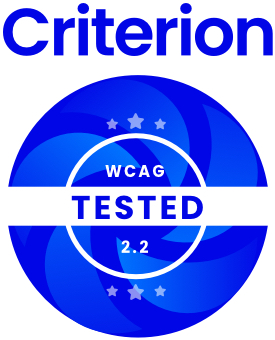What is WCAG?
The Web Content Accessibility Guidelines
The Web Content Accessibility Guidelines (WCAG) are standards and instructions for making digital content more accessible to people with disabilities. The World Wide Web Consortium (W3C) created the WCAG. The WCAG guidelines are considered the benchmark for website accessibility. They are broken down into four principles: Perceivable, Operable, Understandable, and Robust.
Three levels of conformance categorize the WCAG guidelines:
- A: The lowest, or bare minimum conformance level
- AA: The mid-range conformance level
- AAA: The highest level of conformance

The WCAG guidelines accommodate a wide range of disabilities, including:
- Visual, Auditory, Physical, Speech, Cognitive, Language, Learning, Neurological, and aging.
- The WCAG guidelines are testable, and most guidelines require manual testing, not just automated testing.
- WCAG 2.0 was published in December 2008 and became an ISO standard in October 2012. WCAG 2.2 became a W3C Recommendation on October 5, 2023.
We'll help you become WCAG compliant.
We are committed to your success!

Request your free WCAG review and consultation. All fields required.
